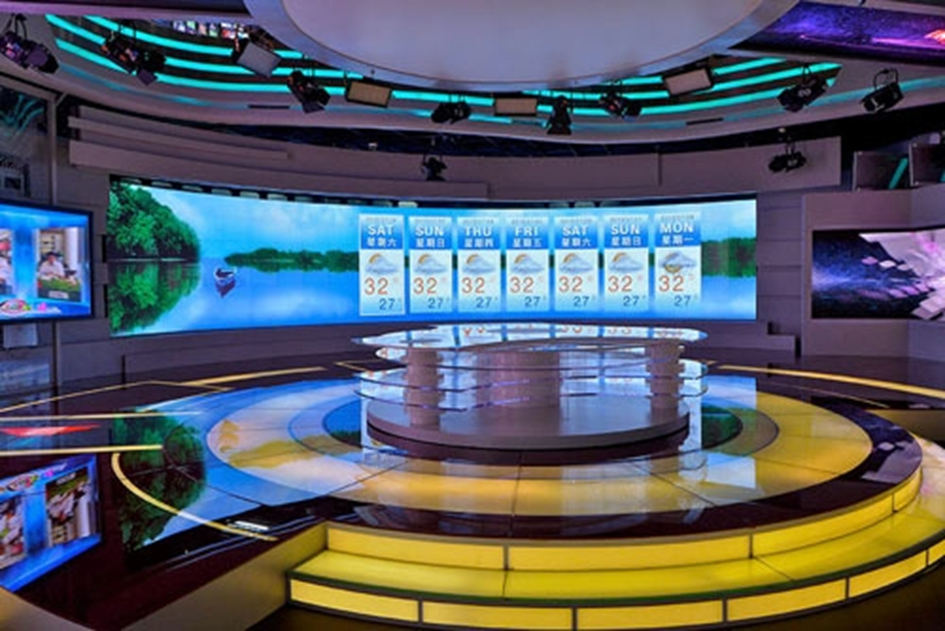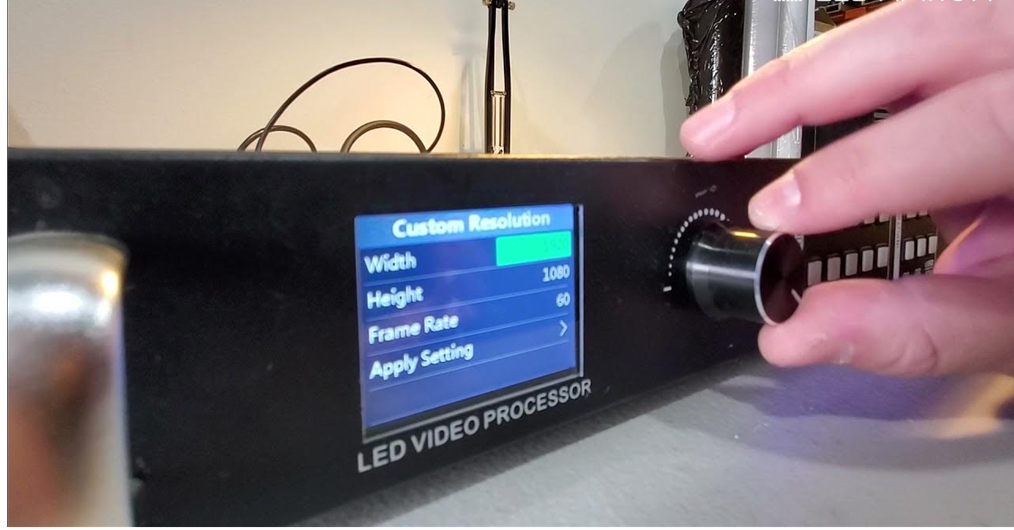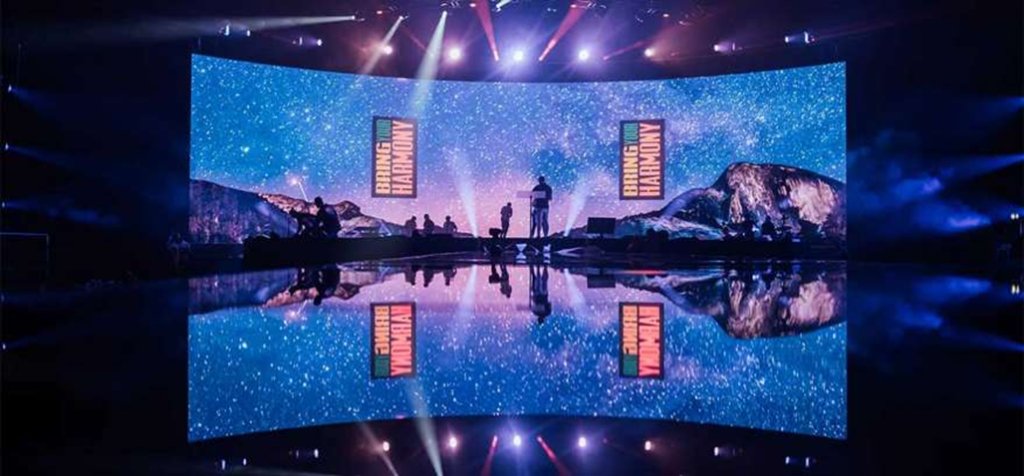
Key Features in LED Video Wall Processor
It’s truly delightful to see so many interesting and cutting-edge innovations in digital display technology. What’s even more exciting is that high-quality digital screens and monitors are now becoming a prominent part of marketing and branding.
While these screens were predominantly used in malls and larger spaces, today, LED walls are being used across multiple industries to captivate consumers and decorate storefronts.
While it is also a little heart-breaking to see some legendary types of screens and monitors going obsolete, such as your standard HD TVs (which were budget-friendly and highly versatile), it is just as exciting to see that the new technology is going to make an even bigger impact.
We’re, of course, talking about LED video walls, which now make it possible for businesses to create an entire wall full of high-resolution video screens displaying all sorts of informative and marketing content.
Pretty cool, right? Well, considering this, we’re going to take a deep dive into understanding what LED video wall processors are, why businesses should use them, and some core elements you should know if you decide to invest in them.
1. Understanding The Concept of LED Video Wall Processors
A video processor for high-resolution LED screen walls is an innovative system that enables you to manage how and what type of content is cycled on your screens. You can easily control the exhibition, keeping everything creative and interesting.
The processor is ingeniously designed to send and receive signals from a slew of input sources, which can range from PCs, any type of media player, and multiple other variations of video technologies.
After the processor receives the signal, it instantaneously translates it to video content/data, projecting on the screen. In addition, it also transforms the input data into a reliable format that can seamlessly be displayed on high-resolution LED walls.
This process essentially compresses data compression, which is vital for sustaining top-notch display quality, maintaining just the right resolution and contrast, and adjusting the brightness level for maximum visual experience.
It then transports the converted and compressed signal data directly to the LED video wall via a complex funnel of network connection that’s mainly found on the driver board. Using an LED video wall with a quality processor or controller can be an incredible way to dazzle onlookers or shoppers with beautiful displays with precision-based content visuals.
In addition, video processors are also designed to be flexible, which means you can tailor the components to meet your individual requirements. This makes the product an excellent tool for organizing LED walls for both big and small events, making installation that much easier.

2. Important Features You Should Consider When Investing in a Video Wall Processor
Now that you know what a video wall processor is, it’s time to look at some vital elements you should not when you’re out looking for the best product.
High-Quality Resolution Capacity
The total amount of resolution output that a video processor for LED video walls has can be categorized into different quality levels. For example, if you’re looking for HD-level output capacities, you should opt for a processor that has the following grades:
·High-Definition: 1920 x 1080 or 2048 x 1152
·Ultra-High Definition: 3840 x 1080 or 4096 x 1152 or 3840 x 2160 or 7680 x 1080
Ensure That the Processors Support the Right Video Formats
There is a wide range of video formats that LED video wall processors can support. These range in things such as DVI, HDMI, SDI, S-Video, CVBS, etc.
However, what’s important is that you select a product that is in line with the type of format you want to support or depending on the application.
Image Optimization
Cutting-edge video processors or controllers are designed to provide users with top-notch data processing performance. For instance, thanks to the constant evolution of display technology, video processors now also come built-in with complex algorithms, such as LED Intelligence Equilibrium, KS-KY Correct, and more.
You should a product in line with your display requirements, going for a processor that continuously improves the display quality of your LED video wall screens.
Fast Switching
As the technology for LED video wall processors stands today, there are three types of distinct signal-switching qualities available – these are switching, fading, and direct switching.
However, if climb higher on the price spectrum, you’ll also find video controllers or processors that are built to provide different types of switching modes (all in one). Regardless, if you’re looking for performance, then opt for a processor that provides direct switching.
Direct switching helps keep the black screen time at a minimum, while some processors provide zero black screen time. These are usually very expensive and high-quality products.
Dual-Screen Functionality
Some of the most conventional types of video processors or, you could, the most used products provide dual-screen functionality.
While this can be enough to provide quality content display, there are most high-end options available that provide three-screen or even four-screen functionalities.
A Processor That Does It All
While having an LED video wall processor comes with a variety of benefits, often, people like to operate their screens seamlessly and without having to interact with different video boxes. They want to make the installation as easy and simple as possible.
Plus, buying multiple video processors to leverage different video quality attributes could turn out to be very expensive. This is why it is better to invest in a high-quality (all-in-one) video control/processor to get more value for money and cut back on the total installation time.

3. Top Use Cases of an LED Video Controller/Processor
There are plenty of ways you can use an LED video wall and its processors. Let’s explore some cool applications of video walls.
Product Exhibitions
LED video walls are excellent for indoor brand marketing, signage, or general information display. They are useful for presenting content and information in a vibrant yet eye-catching way and from decent distances.
This is the reason why you may see such LED video processors placed in different venues such as airports, museums, cultural exhibitions, restaurants, hotel lobbies, and a load of other events. They are a perfect tool for captivating attention while not being too bright.
The video processor, in this regard, can play an instrumental role in helping adjust the display quality in accordance with the environment, providing a suitable layering effect for optimal display and maintaining the quality of the broadcasted content.
Institutional and Business Purposes
For LED screens used in business conferences, seminars, classrooms, etc., in order for the content display quality to be perfectly balanced, the data retrieved and presented on the screen should be adequately compressed.
It is important that the size of the screen is optimal for better visuals and content absorption. This is essentially where a quality LED video wall processor comes into play.
The processor can quickly retrieve and convert data by compressing it and making the image broadcast that much sharper and seamless. It is going to help you drastically optimize the output capability of the screen, providing an ultra-high display resolution.

4. Some Important Components in Video Wall Processors
There are a variety of cutting-edge components that are added to video wall processors that you should know about. Some of the most important ones are:
The LED Circuitry Unit
This is a type of electrical board in the processors that comprises the most vital type of electrical circuit that can help optimize the screen performance output. There are several different components the circuitry unit is made from, such as modules, driver chips, boards, and more. All of these components help the processor quickly and adequately control the quality and stability of the content that is being broadcast.
The Display Management System
This is a control system that comprises various system management cards that manage the data storage and functionality aspects of the processor. High-quality video controllers or processors come with two types of systems – synchronous control and asynchronous control.
The Power Source
Finally, video processors come with durable alternate current power sources that can work with most LED video walls – the most common types of voltage systems being 220 volts or 110 AC. However, the single power source of the processor converts AC into direct current to achieve a balanced, smooth, and high-quality visual experience.

5. LEDSINO is Revolutionizing How Businesses Use LED Display Technology and Accessories
Being a manufacturer and distributor of some of the best LED display screens and accessories across the world, LEDSINO has its own line of some of the most cutting-edge LED video wall processors.
At LEDSINO, we have a broad category of indoor and outdoor LED display units and video processors that are designed for optimum performance, minimal maintenance, and faster and more seamless installation processes.
With products that match the budgetary requirements of different clients, we can help you search for and narrow down a list of some of the LED processors you need in line with your requirements.